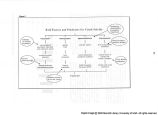| Show Morbidity Indicators Incidence rates are defined as the total number of new cases ofparticular disease per year divided by the population then multiplied by 100 000 or 10 000 Immediate problems arise when attempting to understand the meaning of trends in the rates What are required first are clear and common definitions of new cases as well as population New cases mean just those among the residents of the area in question visitor to the area who contracts the disease and goes 1o the doctor would not be counted asnew case Next the denominator in the equation population can skew the figure as well To compare figures from year to year with some degree of accuracy the manner in which population statistics are gathered must be similar Further there is always the possibility that the number of new cases is erroneous This number could be mistaken for many reasons Two simple reasons are that those without health insurance may not visitphysician and thatcase may be diagnosed incorrectly Yet even with the possibility of error these rates remaingood indicator of the overall health of the community Several of the morbidity indicators include incidence charts for specific age groups These illustrate the importance of targeting specific age groups particularly at risk such as pre-school and school age children and the elderly Prevalence rates also are frequently used to measure disease conditions inpopulation but have not been reported in this section Prevalence of risk factors are included in the Risk Factor section of the Review Prevalence rates measure the total number of existing cases atgiven point in time Thus they are helpful in measuring the overall health ofpopulation atpoint in time while incidence rates are helpful in measuring changes and in assessing the control of communicable diseases 98 Digital image 2005 Marriott Library University of Utah Al rights reserved |

















































































































































































